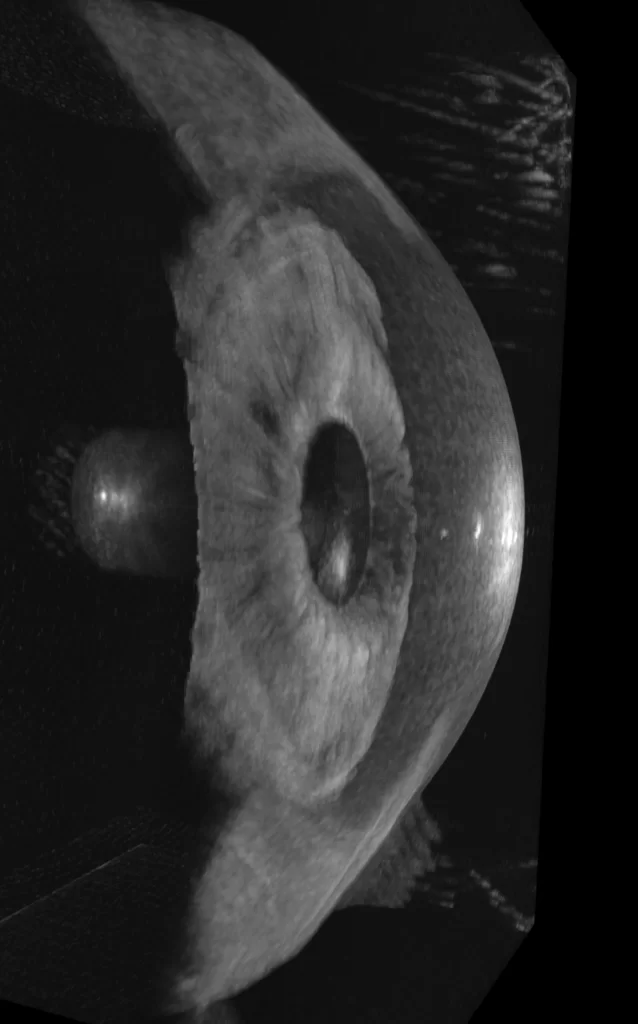This award-winning device could streamline optical health diagnosis and improve the patient experience.
A recent Australian Engineering Excellence Award recipient, the Hyperparallel OCT (HP-OCT) is an all-in-one diagnostic device for ophthalmologists and optometrists.
It is also in the running for the national Sir William Hudson Award, which will be announced at the Pinnacles Award Ceremony on 9 November.
Designed by a multidisciplinary team including optical, mechanical, electrical and software engineers from Australian medical technology manufacturer Cylite, HP-OCT uses thousands of light waves to create an accurate and almost instantaneous 3D image of the eye.
A moving target
Optical coherence tomography (OCT) imaging has existed for decades, but struggles to overcome one particular problem: it is very difficult for patients to keep their eye still long enough to capture a clear and accurate image.
“The eye moves when people move,” Cylite VP of Sales and Marketing Kylee Hall told create.
“It moves when you breathe, it moves as blood moves through your body. As much as you might think you’re keeping still, everything is moving.”

Because of this movement, existing OCT instruments need to scan the eye multiple times and use eye tracking techniques to build up an image. With the HP-OCT, however, engineers divided the current single beam into 1,008 ‘beamlets’ that simultaneously scan the eye, capturing a highly accurate 3D image in seconds.
“Existing advances in OCT technology rely on blood vessels as reference points,” Hall said.
“Hence technology development is limited in the front of the eye because it doesn’t have those reference points.
“This is where the HP-OCT stands apart, as it can capture OCT images of the front and the back of the eye in moments and is not impacted by motion artifacts.”
Advances in OCT technology over the past 20 years have enabled practitioners to detect possible eye diseases such as macular degeneration much earlier, Hall said, potentially saving the vision of thousands of patients.
“Like any development in medicine, if you’re able to visualise more, you’ve got an opportunity to intervene earlier, and hopefully prevent any sort of systemic diseases of the eye progressing,” she said.
Not only can the HP-OCT help with the early detection of diseases, but it could also allow opticians to see more patients as it combines several instruments in one.
“Currently we say, ‘can you put your chin on this machine and now move on to the next machine’,” Hall said.
“That’s really time-consuming and quite difficult for elderly or less able patients.
“Now, for many eye conditions, patients will only have to put their chin on this one machine. It has the functionality of several technologies in one device.”
Overcoming setbacks
Combining several diagnostic machines into one has been no easy feat.
There are seven separate processors, each with associated firmware, within the HP-OCT unit.
This required the development of novel and unique optical designs, as well as incorporating the control and interfacing of multiple subsystems into a complex, real-time, interactive system
Engineers from various disciplines worked on the HP-OCT as a team to ensure these subsystems worked in harmony with one another.
This meant the team could come at the motion artifact problem from completely different perspectives.
“There is such possibility in having a team of unique scientists and engineers all harmoniously working together,” Hall said.
“It really allows for extremely innovative work.”
The team members had to become fluent in understanding each other’s fields of expertise, as well as brushing up their knowledge of optical diagnostics.
“Almost all of the software and the firmware has been coded from scratch,” Hall said.
Unfortunately, as with many projects, COVID-19 has thrown a spanner in the works for the HP-OCT. Members of the team have been able to work from home, but Hall said being apart had impacted brainstorming and creative problem-solving.
“We have seen a disruption in communication,” she said.
“Before, you had your optical engineer sitting next to the software engineer across the bench from a mechanical engineer. They would often have a chat about a problem and they’d all be contributing to it.
“Now, we’re using virtual communication software tools, but it’s not as fluid as being face-to-face by any means.”
Innovation is really at the heart of the HP-OCT and Cylite, which was started by the Frisken brothers, physicist Steve and software engineer Grant, in 2013. Cylite is the only Australian company working in the ophthalmic diagnostic OCT space and has a lot of competition from overseas.
“Multinational companies in Germany, Japan and the US have been working on this technology for decades, but it’s a first for Australia,” Hall said.
“Multinationals often don’t have the luxury of going back to the R&D bench and re-engineering an established technology to address a fundamental problem, which puts Cylite in a unique place … The team has been able to come at this motion artifact problem from an entirely different engineering angle.”
Don’t forget to tune in to the Pinnacles Awards Ceremony on 9 November to find out who will take home the Sir William Hudson Award.